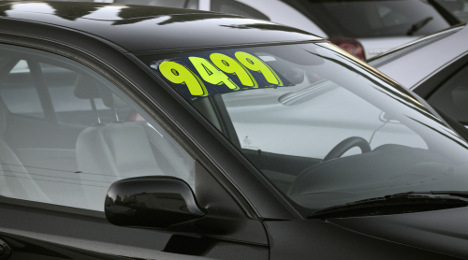Wholesale depreciation quickens in May, but index up

NADA Used Car Guide’s seasonally adjusted used-vehicle price index rose by 0.7 percent to 119.1 — the first increase since November.
And while wholesale depreciation sped up in May as prices of used vehicles fell by 2 percent compared to April, May’s performance was better than expected and was an improvement over the 2.7 percent decline average over the previous four years.
“As for May’s moderately stronger performance, a slight pullback in auction sales volume compared to April likely had something to do with it, as did the Memorial Day holiday (which can disrupt dealers’ auction activity),” Larry Dixon, senior manager for market intelligence at NADA Used Car Guide, told Auto Remarketing. “Given that May was one of the better months we’ve seen in some time I don’t expect it to develop into a trend.”
According to NADA Used Car Guide's monthly Guidelines report, compact car depreciation continued at an industry-high pace, reaching 3 percent over the month, while large- and midsize car losses averaged 2.7 percent. Depreciation of subcompact cars remained high at 2.4 percent, although that was an improvement over April’s 4-percent loss. Losses may have been worse if not for a 17-percent pullback in late-model auction sales volume over the month (although subcompact car sales volume year-to-date was up 29 percent).
Likewise, prices of mainstream compact utility vehicles fell at an above-average rate in May, thanks to pressure from a growing pool of supply and more enticing new-vehicle incentives. May’s 2.5 percent decline was nearly 1.5 percentage points more than April’s.
Prices in this segment rose by 2.2 percent from Q4 2014 through May 2015, but they have fallen by 2.5 percent over the same period this year (Q4 2015 through May 2016). So the net difference is roughly 5 percentage points, Dixon said.
Compact utilities joined subcompact and compact cars for the biggest negative year-over-year swings in the industry.
Midsize van prices fell by less than 1 percent, thanks to a 22-percent reduction in late-model auction sales volume. Prices for the segment fell by an average of nearly 2.5 percent in May over the past two years.
After a sluggish start this year, midsize and large pickup trucks returned to their former path of strength over the path two months. Prices for the two dipped by a combined average of just 0.4 percent in May, up from April’s 0.6 percent drop.
Losses on the luxury side were comparatively mild. Luxury compact utility prices declined the most in May (2.1 percent), which is slightly more than the segment’s 0.6 percent average decline in May over the past two years. Losses for the other luxury segments averaged 1.2 percent for the month.
When compared to the same period in 2015 on an index basis YTD, average prices this year are down by about 4 percent. Through the first five months of the year, depreciation has accelerated at a steeper rate for small and midsize cars, as well as small and midsize utilities. Vehicles in the large car, truck, SUV and luxury segments have fared better.
What’s expected for June
NADA Used Car Guide predicts that prices of vehicles up to 8 years old will fall by 2.5 percent to 3 percent when compared to May. This expected drop is in line with the 2.5 percent decline recorded for the month in 2014 and 2015.
Among mainstream segments, subcompact, compact and midsize car prices are expected to drop the most —an average of 3 percent, which is generally in line with last June’s losses.
Compact utility depreciation is expected to move from 2 percent last June to almost 3 percent this year. Prices of pickups and large utilities should decline by 2 percent or less, while prices for remaining non-luxury segments should fall by an average of 2.5 percent. Luxury segment prices are expected to fall between 2 percent and 2.6 percent.
Looking ahead to July and August, depreciation is expected to fall between 2.5 percent and 3 percent. Prices fell by an average of 2.5 percent over those same months in 2014 and 2015.
NADA Used Car Guide’s full-year forecast is unchanged from last month, with prices expected to be down 5 percent to 6 percent on an index basis from 2015. This would place prices below 2011 levels and mark one of the steepest non-recession declines over the last 20 years.

 View The Latest Edition
View The Latest Edition

